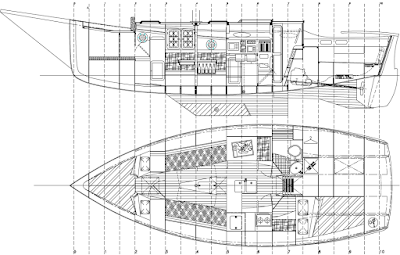After amateur boatbuilding also started to weaken, it was interesting (but distressing) to observe the progression of the slowing sales around the world. First to go were the industrialised countries, led by USA and UK, then it spread to less developed countries. It is said that when America sneezes the world will catch the cold. When we lived in South Africa we could watch that phenomenon and knew that what was happening financially in USA, whether up or down, was likely to be mimicked in South Africa within a year or two.
The one market that seemed to stay remarkably buoyant was Russia, where amateur boatbuilding seemed to stay strong. Then war and politics stepped in, the Russian economy took a dive and sales of plans to amateurs in Russia also fell.
Boats are not an essential part of life for most people. For some they are transport or a work implement, for others they are a home but for most people their boats are toys, sporting equipment, or somewhere between, certainly not high on the list of essentials when money becomes tight.
Now we seem to be coming out of that slump. The US economy has been showing signs of life for a year or two and that now seems to be filtering down far enough that amateur boatbuilders are again starting new projects. If the normal pattern pertains, the upswing will spread out to the rest of the world as well.
Over the 35 years that I have been designing boats professionally, I have drawn mostly boats that are suitable for amateurs to build. This was not an intentional path in my design career but, in retrospect, was probably the most natural and logical one. My roots are in amateur boatbuilding, when I built a plywood 36ft cruiser/racer in my in-laws' garden, based on a design by Ricus van de Stadt. My own first full design was the CW975 for a 32ft plywood racer/cruiser, which I also built after it won a design competition. The third design that I drew was the steel Pratique 35 cruiser for an amateur-builder friend. Next was the Coquette 39 plywood racer/cruiser commission, also for an amateur. Only after that did I receive my first commission from a professional builder for a production GRP boat.
 |
| My own 2nd big boat project, the CW975 "Concept Won", in my garden. |
As the slump deepened, the average size of boats that people chose to build slipped lower, until we were selling only dinghies and trailer-sailers. Now that average size is starting to creep upward again, as builders move back into bigger boats. The most durable design that we have is the Argie 15, which has developed a good following that keeps it going strongly through thick and thin.
 |
| Argie 15 built by Andrey Borodikhin in Moscow, Russia. |
In trailer-sailers, the little gaffers, in the form of the Cape Cutter 19 and Cape Henry 21, are the ones that keep going. These lapstrake plywood boats are more complicated projects than a simple stitch-&-glue boat but they are just so pretty that they have attracted a good following. They have also proven to be quick in the light stuff and capable in the rough stuff, so they have grown a reputation for being desirable boats. That resulted in the upward expansion of this design range with the Cape May 25.  |
| Beautifully-built Cape Cutter 19, built by Sergio Vianna of Curitiba, Brazil. |
 |
| Accommodation layout of Cape Charles 32 cruiser. |
 |
| Didi 950 radius chine plywood racer/cruiser. |
To see more of these and our many other designs, visit http://dixdesign.com/ or http://dixdesign.com/mobile.
No comments:
Post a Comment